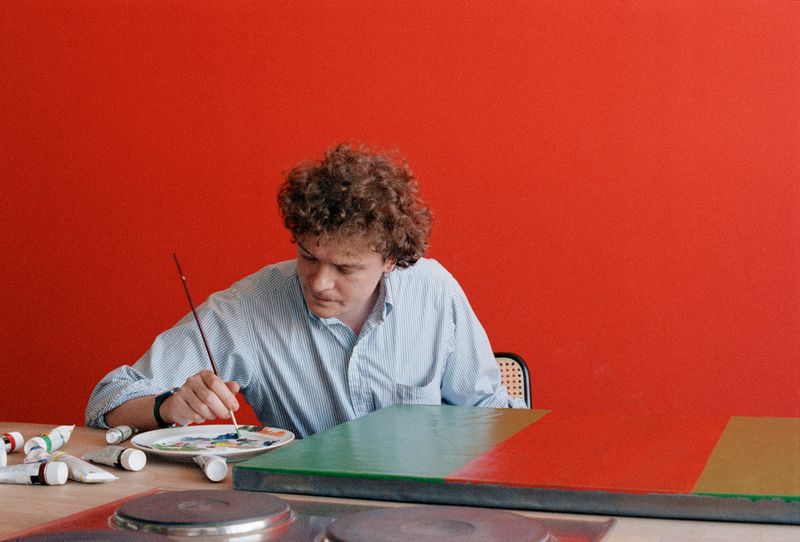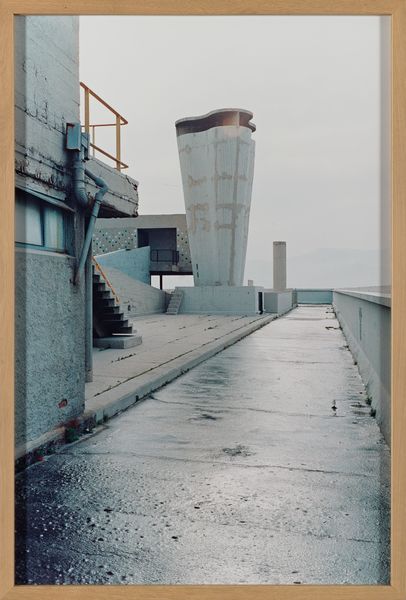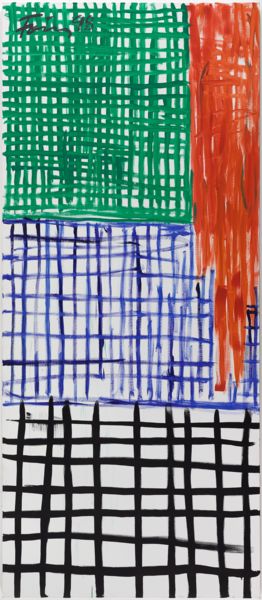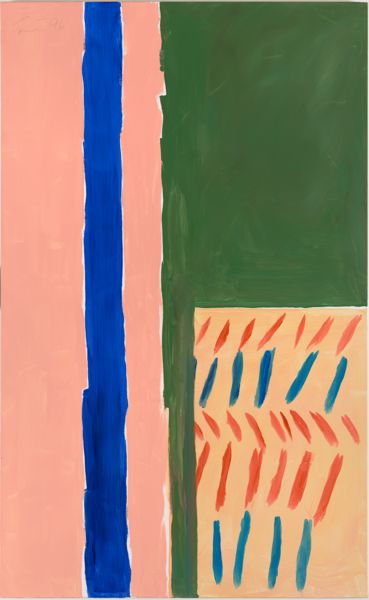Hauser & Wirth announces exclusive representation of the Estate Günther Förg and publication of the Catalogue Raisonné

© Wilhelm Schürmann, Herzogenrath. Courtesy Estate Günther Förg, Suisse.
Hauser & Wirth announces exclusive representation of the Estate Günther Förg and publication of the Catalogue Raisonné
1 June 2018
Artist
'His multidisciplinary oeuvre comprises a series of ambitious, sustained investigations into new materials and philosophies.'
Hauser & Wirth is pleased to announce its worldwide exclusive representation of the Estate Günther Förg (1952 – 2013), whose retrospective ‘Günther Förg: A Fragile Beauty’ is currently on view at The Stedelijk Museum Amsterdam through 14 October 2018 and will travel to Dallas Museum of Art in the fall.
Born in Füssen, Germany, Förg was a prolific painter, sculptor, graphic designer, and photographer whose daring conceptual works incorporate and critique tropes of the sprawling movement known as Modernism. His multidisciplinary oeuvre comprises a series of ambitious, sustained investigations into new materials and philosophies. Förg tirelessly engaged the intellectual context of 20th-century art-making, creating deft and witty reactions to the Minimalism of Kazimir Malevich, the figuration of Paul Klee, the formal abstraction of Blinky Palermo, and the Expressionism of Clyfford Still and Mark Rothko. In so doing, he left behind an oeuvre that defies easy categorization.
A leading artistic figure in Germany until his death in 2013, Förg created an art that continues to be widely exhibited in Europe and wider afield.
Hauser & Wirth will present its first exhibition devoted to Förg in the United States in Spring 2019. In working with the artist’s Estate, the gallery’s goal is to introduce Förg’s contributions to wider audiences and new generations internationally through exhibitions, the commissioning of new scholarship and research, and by supporting publication of the catalogue raisonné.

Günther Förg, Cité Radieuse, Marseille, 1986 © Estate Günther Förg, Suisse. Courtesy Estate Günther Förg, Suisse.
Iwan Wirth, co-Founder and President of Hauser & Wirth, remarked, ‘We are honored to work with Ika Huber, Günther Förg’s widow and managing director of the Estate, and Michael Neff, the artist‘s longtime assistant who now works closely with the Estate, to ensure that Förg’s audacious practice is not only understood and appreciated worldwide, but embraced by new generations of art historians, artists, and museums. A critical component of our gallery’s mission is to serve as custodians of artists’ estates and stewards of their ideas and contributions. We are particularly excited to work on furthering Förg’s reputation in Asia and the United States, and to develop internationally the great passion for the artist’s work that exists in his homeland of Germany.’
Ika Huber and Michael Neff commented: ‘For many years Förg was a central figure in Germany’s art scene and showed with a broad range of artists and galleries of his generation. Each of these relationships had a profound influence and helped guide his career, but since the artist’s death in 2013 we have been focused on establishing the Estate and now require a different kind of gallery representation. Hauser & Wirth is renowned for a first-class reputation in estate management—their obvious sensitivity and experience in this area makes Hauser & Wirth the natural partner for us as we look to the future and we are excited to begin this new chapter together.’

Günther Förg, Untitled, 1998 © Estate Günther Förg, Suisse. Courtesy Estate Günther Förg, Suisse.

Günther Förg, Untitled, 1993 © Estate Günther Förg, Suisse. Courtesy Estate Günther Förg, Suisse.
About Günther Förg Günther Förg was born in 1952 in the region of Allgäu, Germany. His career began in the early 1970s as student at The Academy of Fine Art Munich. During his studies, Förg developed a practice grounded almost exclusively in grey and black monochrome. These early investigations into gray – also called ‘Gitter’ paintings – demonstrate the beginning of a lifelong commitment to conceptualism. As he stated, ‘Grey is nothing: not white, not black. Something in between. Not concerned with the figure. Something free.’ While the artist later incorporated color into his monochrome series, his use of gray represents a neutral foundation from which he conceived his oeuvre.
In the 1980s, Förg began utilizing photography, printing large-format images of culturally- and politically significant architectural structures, from Bauhaus buildings in Tel Aviv to Fascist constructions in Italy. This diversification of material and form led Förg to abandon painting altogether, and for some years he pursued a purely photographic practice as a reaction against painting itself. He would later reflect that his use of photography was a method of ‘working closer to reality,’ stating, ‘what one paints is not reality.’
Throughout the 1980s and 1990s, his photographic works achieved critical acclaim and were exhibited at major museums internationally, including the Kunsthalle Bern in Switzerland and The Solomon R. Guggenheim Museum, New York NY. During this time, Förg also began experimenting upon the exhibition space itself, painting over the gallery walls, and positioning photographs against his own paintings.

Günther Förg, Untitled, 2005 © Estate Günther Förg, Suisse. Courtesy Estate Günther Förg, Suisse.

Günther Förg, Untitled, 1996 © Estate Günther Förg, Suisse. Courtesy Estate Günther Förg, Suisse.
Förg entered a new phase of experimentation in the late 1980s, which brought him back to painting, but also included the embrace of new materials for him, such wood, copper, bronze, and lead. Förg’s renowned lead series—acrylic painted on sheets of lead and supported by wooden frames—blurs the line between painting and sculpture in an evolution towards object-making. Also initiated during the 1980s, his bronze sculptural practice indicates a painterly quality, with indentations and marks that are reminiscent of a brushstroke, as he attempted to replicate a moment frozen in time.
In pursuit of further artistic experimentation Förg began producing fragmented body-part sculptures in the early 1990s, describing this arrival at figuration as inevitable. These new works embraced the materiality of their making; the heavy, weathered, and scratched surfaces of the sheets of metal, lead, and wood hint at something that is simultaneously formal and expressionist, geometric and free.
By the beginning of the 21st Century, Förg’s paintings had left the formality of Minimalism behind. In a new direction, he incorporated a brighter palette and more expressive hand with a series of grid-like marks and intersecting colors. These paintings—called ‘Gitterbilder’ (grid paintings)—command a similar freedom of form and sensuality that has led to critical comparisons to Cy Twombly. Other works from this era portray vast canvases of negative space interrupted by colorful, gestural hatching and mark-making. Förg’s ultimate return to expressive painting indicates a completion of sorts—a full-circle arrival at painting as a synthesis of experimentation, rooted in art history. In the artist’s own words, ‘I think painting is a resilient practice; if you look through the history of painting it doesn’t change so much and we always see it in the present. It is still now.’
Related News
1 / 5




